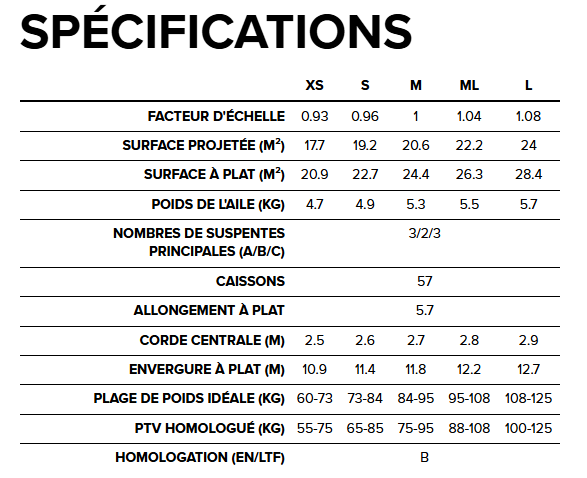
BGD Base 3 Tests - May 2025
Share
Our DTE Laurent Van Hille was able to test our Base 3 demo a few days ago, here is the report.
The Base is a benchmark at BGD. It's the "B" category wing designed for cross-country use. Each brand has its own "machine." Competition is therefore fierce.
Personally, I enjoyed the first two Bases, but nothing more. Well, I might as well tell you right away, I loved the 3rd. It's clearly very different from its two big sisters.
The very particular shape of the BGD Base 3
The least we can say is that it is very different from the first two models. We will note:
- A much more pronounced vault
- A much shorter suspension cone
- Wing tips with winglets
- A fairly large central chord and very tapered wingtips
- Nice, big cells in the center and much smaller cells at the wingtips.
As you can see in the following image, the shape of Base 3 is very different from Base 1 and 2
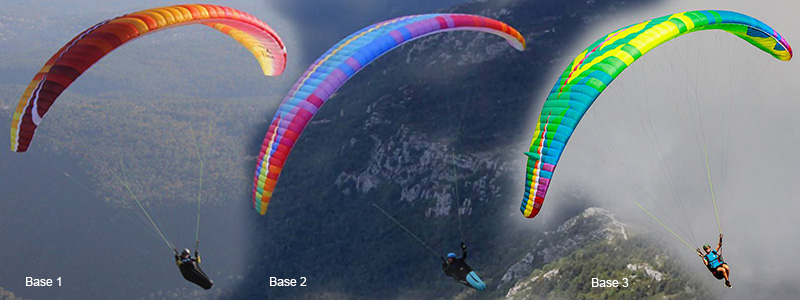
A quick tour of the machine
The BGD Base 3 is a 2.5 line... Well, let's say it's a line optimized to reduce drag. The entire line system is unsheathed. However, untangling it isn't complicated.
The risers are optimized for speed. Not for handling... Neither on the ground nor in the air ;-). But this category of wing is aimed at experienced pilots. And so the fact that the risers are a little more complex than those of a school wing should not bother any pilot.
THE leading edge is very clean. The rods are nylon (plastic for rotofile, most pilots will say). The reinforcements run all along the upper surface. It requires a little attention when folding. But the designers have a lot of perspective now and objectively, it doesn't seem to pose any problems. Even when you fold the wing tightly in a bag.
The surface condition is impeccable. The trailing edge (braking) is very well worked.
I really like the quality of the finish.
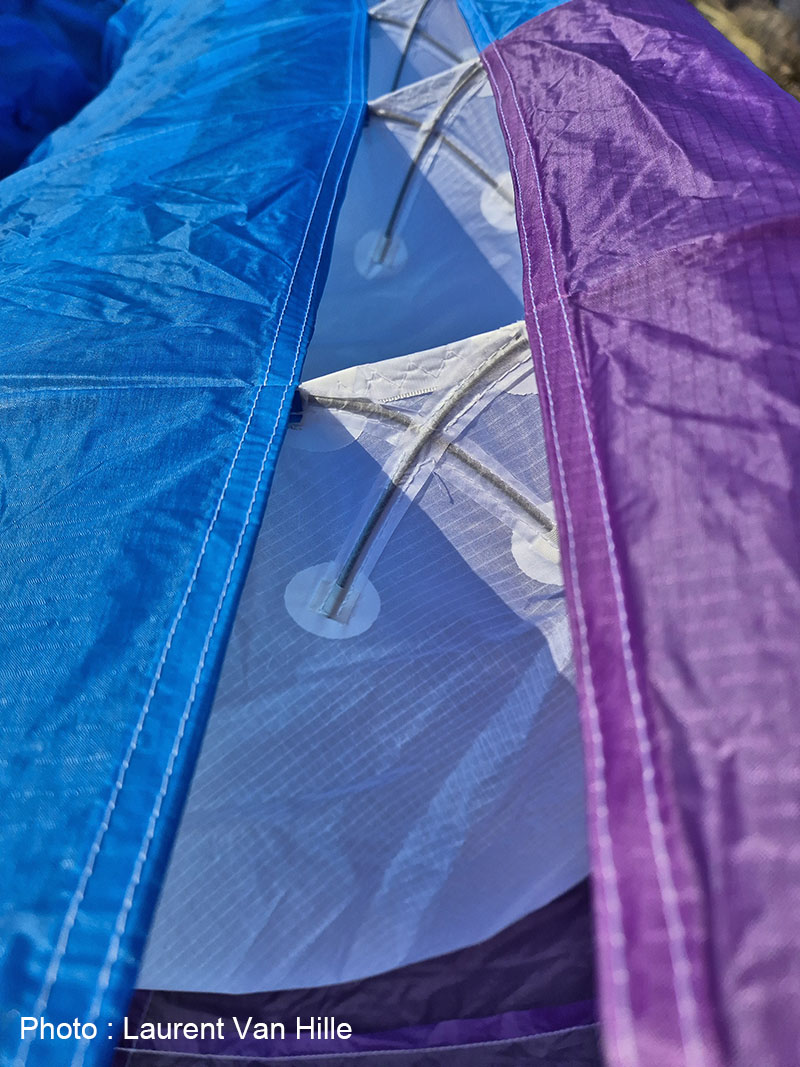
Piloting in calm air
When inflating, the Base 3 is a little lazy when climbing without wind. You shouldn't hesitate to "shock" it a little. As soon as there is wind, the problem is solved. In strong winds, it climbs without tearing off its pilot. Tempo is necessary, but not very technical.
The handling is fast. The Base 3 handles takeoffs with a lot of braking very well. Although it's not recommended, it tolerates it well.
The symmetrical amplitude at the controls is just incredible! I don't think I've ever seen such amplitude on a wing of this aspect ratio? In addition, the Base 3 has a long parachutal phase before gently stalling the wingtips. As soon as you raise your hands, the wing tows directly without excessive shooting.
The Base 3 turns well on the brakes. Of course, the harness support helps with the turn. But steering is mainly done with the brakes. It is relatively unresponsive to the harness.
Finally, the final flare (final braking) is very intuitive and is done over a large travel. It is very tolerant if the pilot lacks precision in this phase of flight.
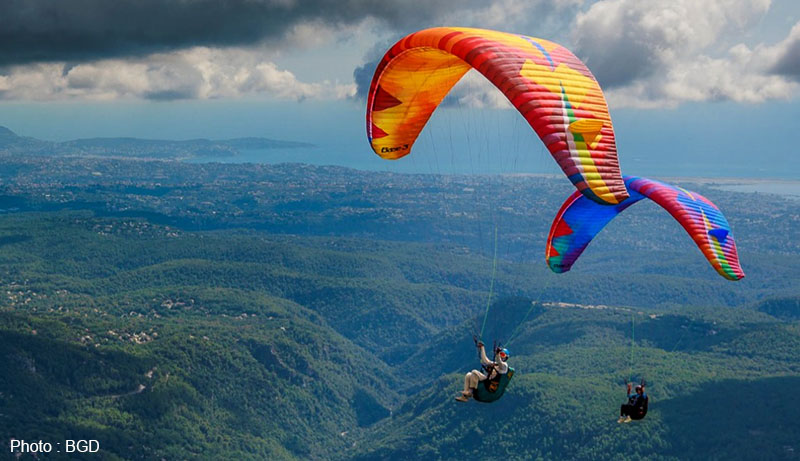
The BGD Base 3 in thermal
A small bike, this Base 3… Easy, intuitive and efficient.
Honestly, an ideal wing for progressing towards cross-country.
The wing is both "ahead." It tends to enter the thermal. This is very pleasant. However, it is very damped in pitch. The Base 3 requires very little active piloting to keep it above your head.
In turns, the Base 3 is controlled mainly by the brakes. With a little harness support to help, of course. But the adjustment of the turn in thermals is mainly done with the brakes. You will have to "really" lower the inside hand during the turn. The cadence (adjusting the turn using the outside hand) is almost not necessary. You apply a little outside brake when the wing accelerates and risks collapsing. But overall, you can adjust the turn in thermals only with the inside wing. It's surprisingly easy.
In conclusion, this Base 3 is a wing that I found really fun in thermals. It is easy, damped and therefore ideal for progressing while having fun.
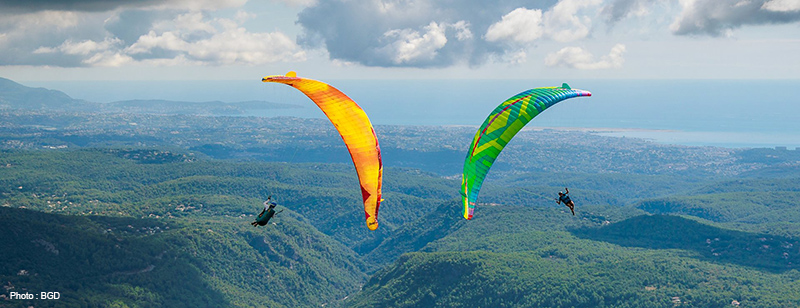
The slide, the transitions
It retains the advantage already mentioned above, of being in front. It glides even when the air mass is turbulent. I haven't taken any measurements. But it holds up in transition with all 2.5 B or C lines. It is a little below an Artik Air for example. But accessibility has nothing to do with it.
The accelerator is very interesting at the first bar. The performances remain equivalent, but with a very interesting speed and penetration in the air.
At the second rung, the finesse deteriorates sufficiently to make you wonder whether it is worth going full rung.
It remains solid at leading edge ! And easy to steer at the rear. It transmits well enough to be able to anticipate its pitching movements and therefore the risk of collapse.
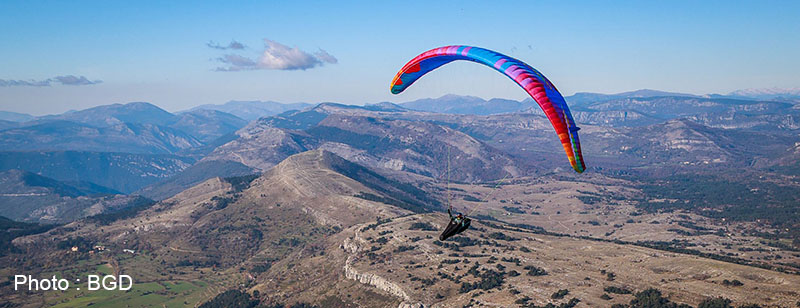
Conclusion
I'm glad I did this test of the BGD Base 3.
This wing is designed for pilots who are already comfortable in thermals and want to continue to progress in thermals and cross-country. It is a wing that offers a large margin of progression thanks to its great passive safety and its very usable performance.
It is a wing that is both easy to access and fun.
We could criticize it for a slight lack of precision in the controls. But you can't have everything: great amplitude and the precision of a racing wing.
The light version, the Breeze, is identical to the same sail, but lighter. So it should be very similar, but easier. I can't wait to try it.
